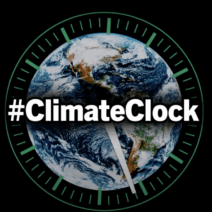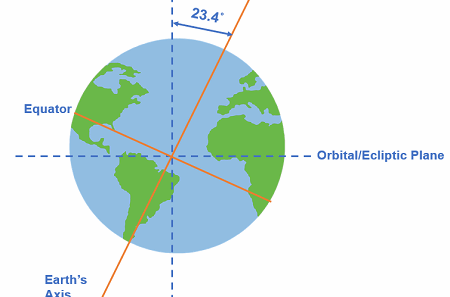The Paris Climate Treaty: Typo or Talk of the Town?
In an era where climate change has shifted from an abstract concern to an immediate threat, the responses from the global community have been varied and contentious. Enter the Paris Climate Treaty, a landmark agreement forged in 2015 that has sparked debates, inspired movements, and, at times, contentious backlash. One might ponder: is the Paris Climate Treaty simply a typographical error in a world fraught with environmental peril, or is it a genuine conversation starter—metaphorically speaking—on the future of our planet?
The Paris Agreement, as it is formally called, emerged from the 21st Conference of the Parties (COP21) to the United Nations Framework Convention on Climate Change (UNFCCC) held in Paris, France. The towering ambition of the treaty lies in its primary objective: to limit global warming to well below 2 degrees Celsius above pre-industrial levels, with an aspirational goal to cap the temperature increase at 1.5 degrees Celsius. This dual target reflects an acknowledgment of both the dire consequences of climate change and an aspiration towards a sustainable global environment.
But what makes the Paris Climate Treaty a “talk of the town”? The answer lies not only in its ambitious goals but also in its inclusive framework, which encourages participation from both developed and developing nations. Moreover, the treaty calls for a “bottom-up” approach, allowing countries to set their own nationally determined contributions (NDCs) based on their unique circumstances. However, with 195 parties to the agreement, the challenge of uniformity raises critical questions about efficacy and accountability.
One could argue that this framework is both a strength and a weakness. On the one hand, it enables countries to take ownership of their commitments, fostering a sense of agency in the fight against climate change. On the other hand, it potentially allows for a lack of rigor in enforcement, as countries may easily amend or abdicate their pledges. This raises an intriguing inquiry: is the Paris Climate Treaty truly a multi-faceted approach to climate governance, or does it merely serve as a safety net for those reluctant to fully commit to stringent environmental efforts?
Furthermore, one cannot overlook the political ramifications woven into the fabric of the Paris Agreement. The perception of the treaty within various geopolitical frameworks can pivot dramatically based on leadership changes and national interests. For instance, shifts in administration can lead to abrupt policy changes, significantly impacting climate commitments. The decision by the United States, under the Trump administration, to withdraw from the Agreement in 2017 exemplified the fragility of international consensus around climate action. This decision was met with widespread criticism, raising questions about the long-term viability of a treaty heavily reliant on voluntary participation and mutual accountability.
Ultimately, the Paris Climate Treaty embodies both optimism and apprehension. It serves as a galvanizing force—encouraging dialogue, spurring grassroots movements, and stimulating technological investments in renewable energy. Simultaneously, it presents formidable challenges that must be navigated thoughtfully. The absence of binding consequences has led to skepticism regarding compliance levels, prompting environmentalists to query whether we are indeed witnessing a “treaty” or simply a compendium of well-meaning intentions.
Moreover, the notion of equity must not be overlooked. The juxtaposition of developed and developing nations presents an inherent tension. Wealthier countries, historically responsible for a significant portion of greenhouse gas emissions, are often criticized for not providing adequate financial and technological support to developing nations. This dynamic fuels a discourse on environmental justice, where the most vulnerable populations are frequently the ones bearing the brunt of climate impacts, despite contributing the least to the crisis.
As the world analyses the outcomes of the Paris Climate Treaty, one is reminded of the power of collective action. The agreement has mobilized millions across the globe, igniting movements that demand accountability from leaders and corporations alike. Initiatives such as the “Fridays for Future” protests, started by climate activist Greta Thunberg, showcase the burgeoning youth-led climate movement, which draws attention to the consequences of inaction and the urgency of immediate reforms.
However, this narrative of hope is countered by a harsh reality. Climate scientists consistently warn the world is running out of time to address the crisis, with emissions continuing to rise. This urgent timing raises a tantalizing question: if effective action isn’t taken soon, could the Paris Climate Treaty transition from being a commendable effort to a mere historical footnote, a typo in the annals of environmental progress?
In conclusion, while the Paris Climate Treaty is undoubtedly a significant step forward in collective climate action, it encapsulates a myriad of complexities that challenge its implementation. It stands as a beacon of hope, yet simultaneously an admonition of the tremendous work that lies ahead. The synthesis of ambition and accountability may yet define how this treaty is viewed in the years to come, making it not just a conversation starter but potentially a point of political contention and societal reckoning. The path forward will require perseverance, innovation, and, crucially, an unyielding commitment to the collective good. In the end, the efficacy of the Paris Climate Treaty hinges not just on words but on tangible action.





